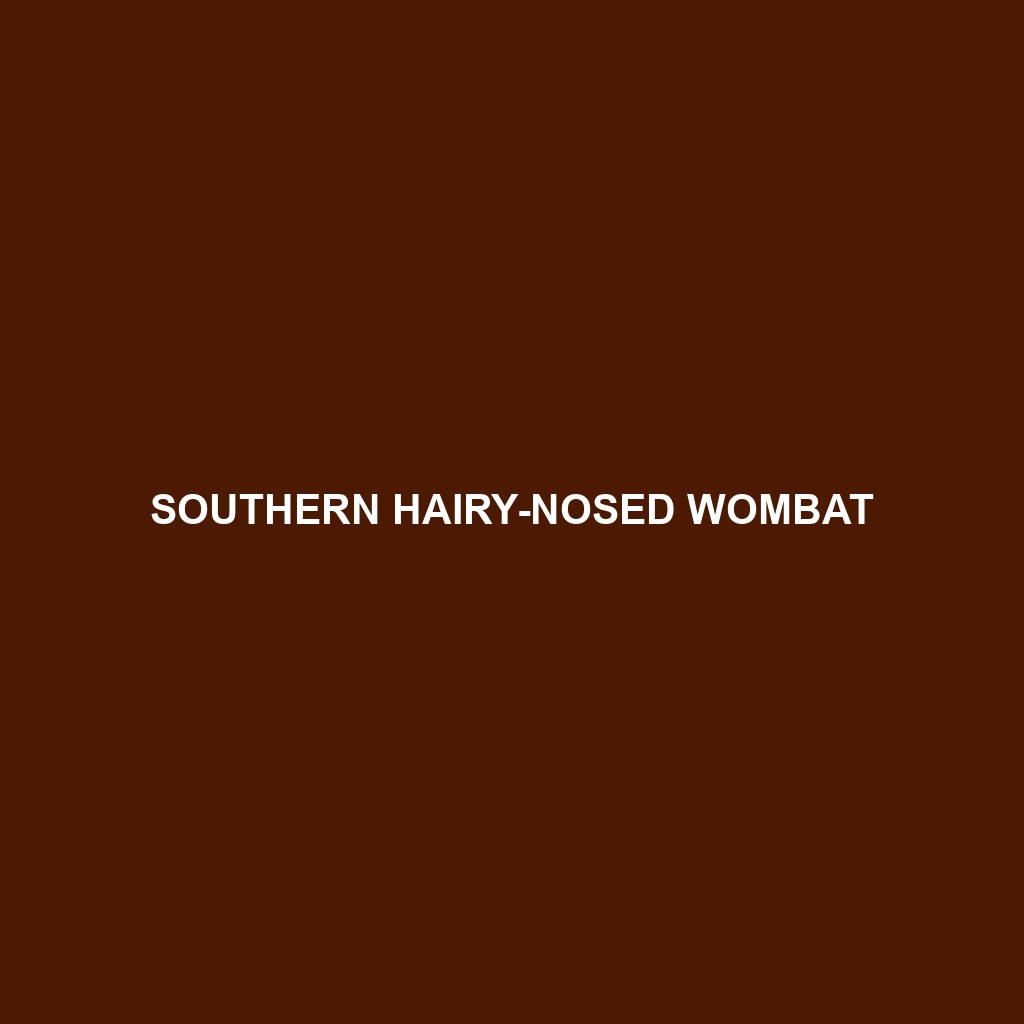Southern Hairy-nosed Wombat: Detailed Animal Description
The Southern Hairy-nosed Wombat (Lasiorhinus latifrons) is a unique and fascinating marsupial native to Australia. Known for its distinctive coarse fur and robust, burrowing lifestyle, this wombat species is an exceptional example of nature’s adaptability and resourcefulness. As the smallest of the three wombat species, it exhibits a range of intriguing physical and behavioral traits that make it a subject of curiosity and admiration.
Physical Characteristics
Size: The Southern Hairy-nosed Wombat typically measures between 77 to 93 cm (30 to 37 inches) in length, with an average weight ranging from 20 to 32 kg (44 to 71 pounds). Males are generally larger than females.
Coloration: This wombat species has a soft, silky coat that ranges in color from light grey to sandy brown, providing excellent camouflage against the arid landscapes it inhabits.
Special Features: Notable for the fine, whisker-like hairs on its nose, which aid in tactile sensation, the Southern Hairy-nosed Wombat also has a broad, flattened head, small eyes, and strong limbs equipped with powerful claws designed for digging.
Behaviors
Social Interactions: Southern Hairy-nosed Wombats are primarily solitary creatures, though they may share extensive burrow systems known as warrens with other individuals. These warrens can extend up to 30 meters in length and are often shared by several wombats, fostering a loose-knit social structure.
Feeding Habits: Herbivorous by nature, these wombats primarily feed on tough native grasses, bark, and roots. They have specialized teeth that continuously grow to cope with the abrasive nature of their diet, and their efficient digestive system allows them to extract maximum nutrients from their food.
Ecological Roles: As burrowers, Southern Hairy-nosed Wombats play a critical role in their ecosystem. Their burrowing activities help aerate the soil, promote plant growth, and create habitats for other wildlife.
Habitats and Adaptations
Habitats: This species primarily inhabits arid and semi-arid regions of southern Australia, including parts of South Australia and Western Australia. They favor environments with sandy or loamy soils that facilitate their digging lifestyle.
Adaptations: Southern Hairy-nosed Wombats are well-adapted to their harsh environments. They have a low metabolic rate and can conserve water efficiently, allowing them to survive in arid conditions. Their burrows provide a cool refuge from extreme temperatures and predators.
Conservation Status
The Southern Hairy-nosed Wombat is currently classified as Near Threatened by the International Union for Conservation of Nature (IUCN). While populations are relatively stable, they face threats from habitat destruction, competition with livestock for food, and disease. Conservation efforts focus on habitat preservation, disease management, and public awareness to ensure their continued survival.
Fascinating Fun Facts
Longevity: Southern Hairy-nosed Wombats can live up to 15 years in the wild and even longer in captivity.
Burrowing Experts: Their burrows can be quite complex, featuring multiple entrances, tunnels, and chambers, often shared with other wombats.
Ancient Relatives: Wombats are related to koalas, and they share a common ancestor that dates back millions of years.
Unique Digestion: Wombats produce cube-shaped feces, which they use to mark their territory and avoid their droppings rolling away on sloped surfaces.
By understanding and appreciating the Southern Hairy-nosed Wombat’s unique attributes, we can better appreciate the diversity of life that inhabits our planet and the importance of conservation efforts to protect such remarkable creatures.
